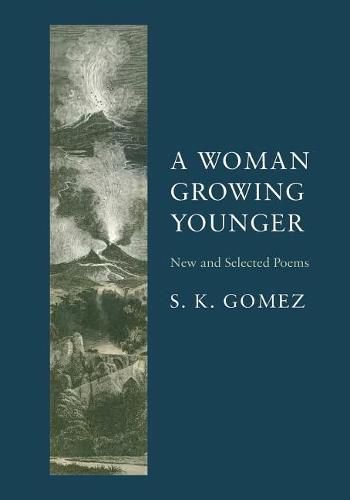Readings Newsletter
Become a Readings Member to make your shopping experience even easier.
Sign in or sign up for free!
You’re not far away from qualifying for FREE standard shipping within Australia
You’ve qualified for FREE standard shipping within Australia
The cart is loading…






In this outstanding collection, S. K. Gomez, like all fine poets, scours the possibilities of language, exploring the boundaries of what words and sounds and images can achieve. The forms that Gomez pursues are varied: elaborately irregular free-verse stanzas ( The Brief Life of Brother Lizard,
Fish Armies ), regular unrhymed stanzas ( A Woman Growing Younger,
Purple ), even an occasional poem in traditional rhyme and meter ( When We’ve Gone with Ghosts,
Prologue,
Epilogue ).
The variety of formal patterns and subjects shaping these poems is matched by the sometimes dizzying variety and shapes within S tty’s collages. These complex illustrations add a striking visual dimension to this volume. As Gomez mentions in his introduction, S tty’s richly layered, fantastic masterworks were meticulously cut and pieced together from a wide range of source materials representing different times and different cultures. Gomez describes S tty’s finest efforts as products of a creative process very much like my own.
Beyond the art and the poetry, this volume can claim still a third level of counterpoint; namely, Yolanda Luna’s sensitive Spanish translations of S. K. Gomez’s poems. As we compare these translations to their English counterparts, we recognize that they embody an entirely different linguistic cadence. Every language allows its poets specific choices, and these are dependent both on the nature of the language and on the poetic practices and conventions developed over centuries. If English poetry can rely heavily upon consonants, monosyllabic words, and nouns that can easily be converted to adjectives, then Spanish poetry often features resonant vowels; inflected, multisyllabic words; and nouns carefully separated from their modifiers.
Gomez’s poems, their Spanish renditions, and S tty’s collages simultaneously work with and against one another in a rich counterpoint wherein the whole is greater than the sum of the parts. In a subtle but fundamental way, this collection resembles a classic triptych–three distinct panels, each offering its own discrete artistic experience, but each simultaneously enriching and informing the other two.
The structure of this book embodies the very aesthetic that Gomez and S tty practice in their respective arts–a complex, layered montage that is at once lyrical and provocative, lush and stratified, disconcerting but harmonious. This collection challenges the reader to appreciate its contents in uncharted ways.
$9.00 standard shipping within Australia
FREE standard shipping within Australia for orders over $100.00
Express & International shipping calculated at checkout
In this outstanding collection, S. K. Gomez, like all fine poets, scours the possibilities of language, exploring the boundaries of what words and sounds and images can achieve. The forms that Gomez pursues are varied: elaborately irregular free-verse stanzas ( The Brief Life of Brother Lizard,
Fish Armies ), regular unrhymed stanzas ( A Woman Growing Younger,
Purple ), even an occasional poem in traditional rhyme and meter ( When We’ve Gone with Ghosts,
Prologue,
Epilogue ).
The variety of formal patterns and subjects shaping these poems is matched by the sometimes dizzying variety and shapes within S tty’s collages. These complex illustrations add a striking visual dimension to this volume. As Gomez mentions in his introduction, S tty’s richly layered, fantastic masterworks were meticulously cut and pieced together from a wide range of source materials representing different times and different cultures. Gomez describes S tty’s finest efforts as products of a creative process very much like my own.
Beyond the art and the poetry, this volume can claim still a third level of counterpoint; namely, Yolanda Luna’s sensitive Spanish translations of S. K. Gomez’s poems. As we compare these translations to their English counterparts, we recognize that they embody an entirely different linguistic cadence. Every language allows its poets specific choices, and these are dependent both on the nature of the language and on the poetic practices and conventions developed over centuries. If English poetry can rely heavily upon consonants, monosyllabic words, and nouns that can easily be converted to adjectives, then Spanish poetry often features resonant vowels; inflected, multisyllabic words; and nouns carefully separated from their modifiers.
Gomez’s poems, their Spanish renditions, and S tty’s collages simultaneously work with and against one another in a rich counterpoint wherein the whole is greater than the sum of the parts. In a subtle but fundamental way, this collection resembles a classic triptych–three distinct panels, each offering its own discrete artistic experience, but each simultaneously enriching and informing the other two.
The structure of this book embodies the very aesthetic that Gomez and S tty practice in their respective arts–a complex, layered montage that is at once lyrical and provocative, lush and stratified, disconcerting but harmonious. This collection challenges the reader to appreciate its contents in uncharted ways.